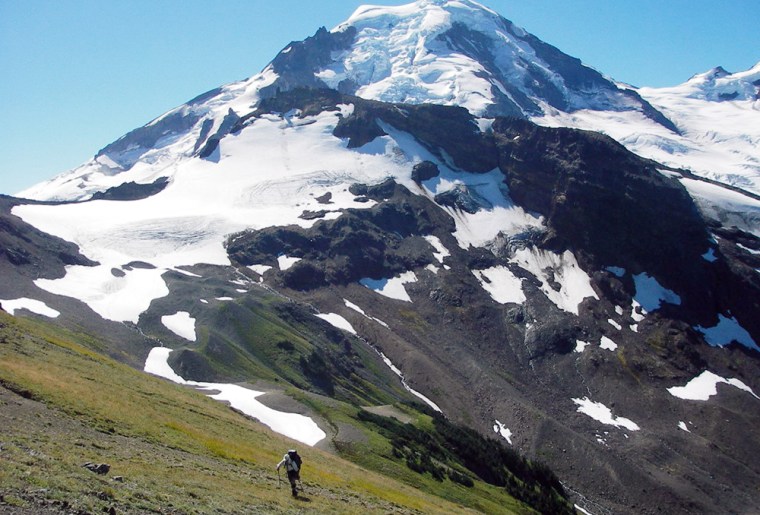More than three decades after steam bursts from Mount Baker resulted in a temporary evacuation of the Baker Lake area, geologists are trying to determine what is happening beneath the volcano.
The research by scientists from Western Washington University is at the center of a Geological Society of America meeting next month in Bellingham. Initial findings indicate the volcano will remain quiet for awhile but not forever, said Juliet G. Crider, an associate professor of geology who led a recent study into the steam and ash spurts
"People are beginning to recognize there's a lack of understanding of Baker," Crider said.
"Among the Cascade volcanoes, I would say it's one of the more active," she said. 'That doesn't mean an eruption is imminent, but it means it's interesting. Something is happening there."
The 10,778-foot peak is one of 27 major volcanoes in the Cascade Range, which stretches from British Columbia to Northern California.
Baker's antics drew headlines in 1975 but were largely forgotten after Mount St. Helens blew its top five years later and in the ensuing concern that Mount Rainier, the highest volcano in the Cascades at 14,410 feet, could unleash an even more destructive blast that could affect suburbs south of Seattle and east of Tacoma.
Small earthquakes that may indicate underground activity now occur once or twice a month beneath Baker, compared with as many as 10 times that number beneath Rainier and thousands beneath St. Helens.
Volcanic activity at St. Helens dates back less than 40,000 years, compared with more than a million years at Baker.
Geologists believe the largest eruption from Baker blanketed areas more than 20 miles to the east with gritty volcanic ash 6,600 years ago.
At the time of the eruption that created the Sherman Crater in 1943, explorers said rock fragments fell like now and set trees on fire for miles around.
Steam puffs from the same crater in 1975 raised fears that rising heat could melt glaciers and cause lahars — torrential flows of mud, debris and water capable of speeds up to 20 to 40 mph and with enough force to bulldoze houses, trees and boulders.
Out of concern that lahars could pour into Baker Lake or Lake Shannon, damage Seattle City Light's Upper Baker Dam and cause major flooding, residents, businesses and campgrounds in the areas were evacuated that June.
Instead, the steam dissipated and Baker was mostly forgotten by the time St. Helens exploded on May 18, 1980, leveling miles of forests and leaving 57 people dead.
Only last summer did faculty and graduate students from the university in Bellingham ascend the slopes of Baker under Crider's direction on a two-year project funded by $107,039 from the National Science Foundation to try to determine what had happened in 1975.
Aided by researchers from the U.S. Geological Survey and Simon Fraser University in Burnaby, British Columbia, the team set out to measure gravity on the crater, check the distance between survey points and to take gas samples from steam vents known as fumaroles in the crater.
In what Crider said was the first examination all three key indicators on Baker at the same time, the team found an increasing acceleration of gravity, shrinking distances between some survey points and high emissions of carbon dioxide and sulfur dioxide.
Taken together, those findings indicate that magma moved toward the surface in 1975 or earlier without producing an eruption and since then has been cooling, releasing gas and contracting.
"We should recognize that Baker is an active volcano and be cognizant of the hazards associated (with that)," Crider said, "but not be afraid that it's going to erupt."
